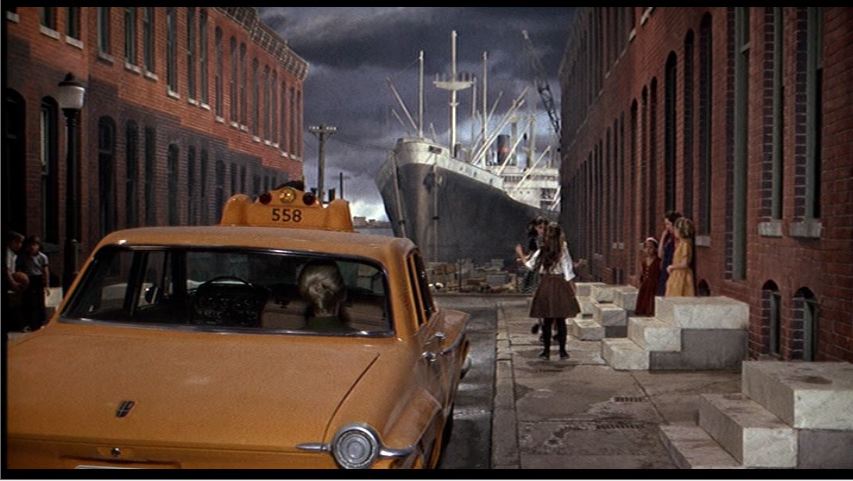- "Tackiness"
- Red/White
- »Yellow/Grey«
The Nondiegetic Dichotomy: Yellow v. Grey
Significantly more interesting than the red/white dichotomy is a nondiegetic yellow/grey dichotomy which distinguishes Marnie’s mental “prison” from freedom. Interestingly, yellow is associated both with outlets that Marnie falsely perceives as freedom – keys and combinations that lead her to money, for example – and true freedom in the person of Mark.
Wood, Robin. “Marnie” Hitchcock’s Films Revisited. (Columbia University Press, rev. ed., 2002) :. 173-197.
Grey as Prison
Grey cues the concept of psychological imprisonment, and also is tied with darkness both indoors and in thunderstorms. Hitchcock associates grey with the vague tension of Mama's apartment even before the confining nature of her childhood is evident:
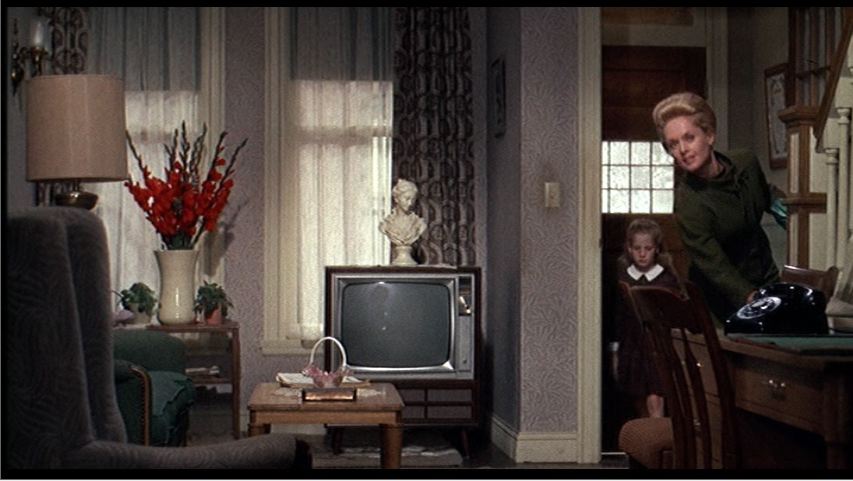
Mama's apartment is decorated in grey and muted tones - with the conspicuous exception of the red flowers atop the white vase.
Later, the dominantly grey imagery will resurface as Marnie prepares to rob (and then robs) the Rutland safe, which is itself grey. Hitchcock thus succintly implies that Marnie's actions are the fault of the prison of her dysfunctional psyche:
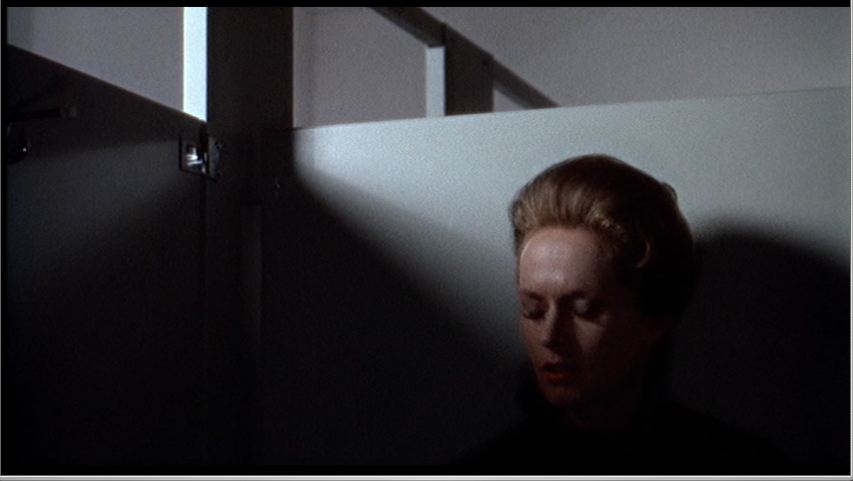
Marnie waits in preparation for her robbery in a bathroom cubicle that is coded prison-like through the grey motif, the light pattern, and its physically confining nature.
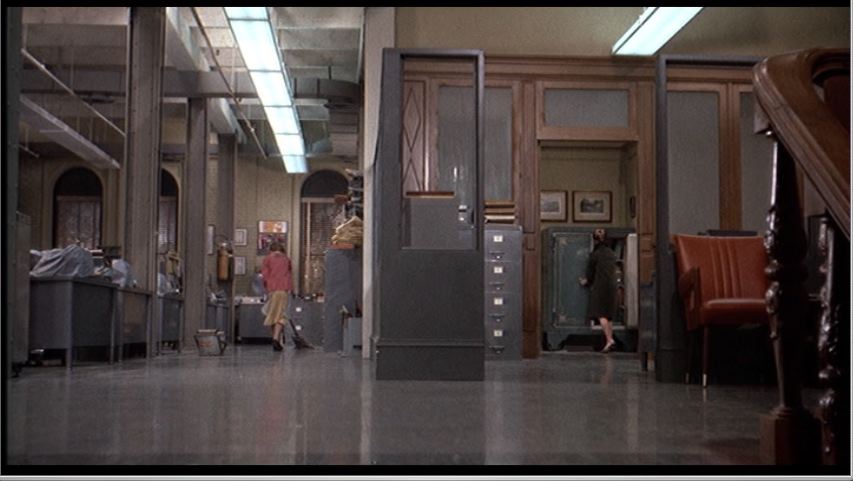
During the act of the robbery, the shot of Rutland's is dominated by bleak grey indicative of the futile nature of this quest of hers for freedom. Note specifically that the safe itself is grey.
Yellow as Freedom
Yellow, by contrast, cues the concept of freedom - both real and illusory. The color is entwined with the concept of (physical) light, as well. Our first direct look at the yellow motif in relation to true freedom comes at the home of Mark, who will ultimately set Marnie free.
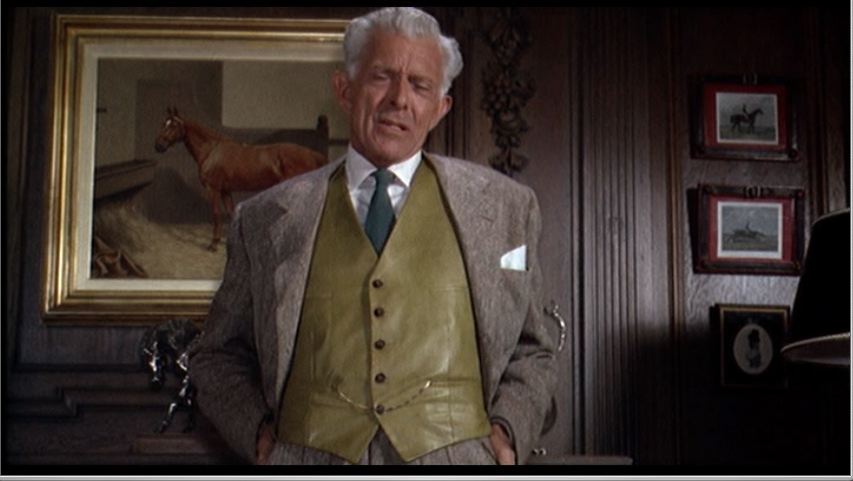
The entire Rutland estate is decorated in shades of yellow, which emerge continuously through Marnie's first visit.
The motif will reoccur through the film largely in direct juxtaposition with various grey imagery, but does appear alone in one critical scene:
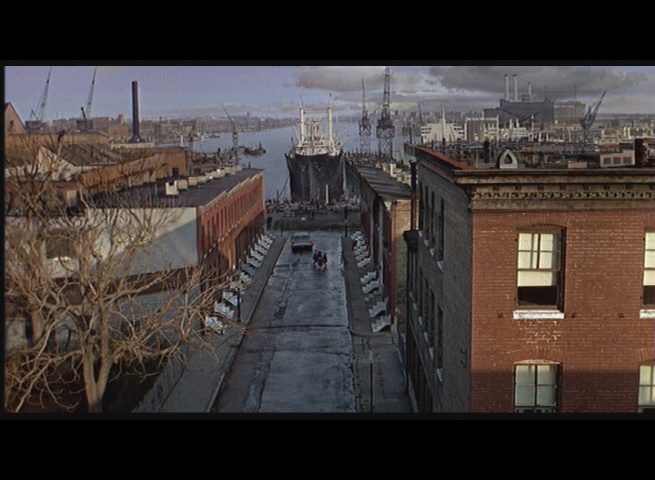
Finally, after Marnie's therapy succeeds, (yellow) sunshine penetrates the landscape of Mama's home - casting into retreat the (grey) clouds which have proven ubiquitous over the course of the apartment's previous appearances in the film.
Grey v. Yellow
In their interplay, of course, lie the most interesting facets of the two color motifs.
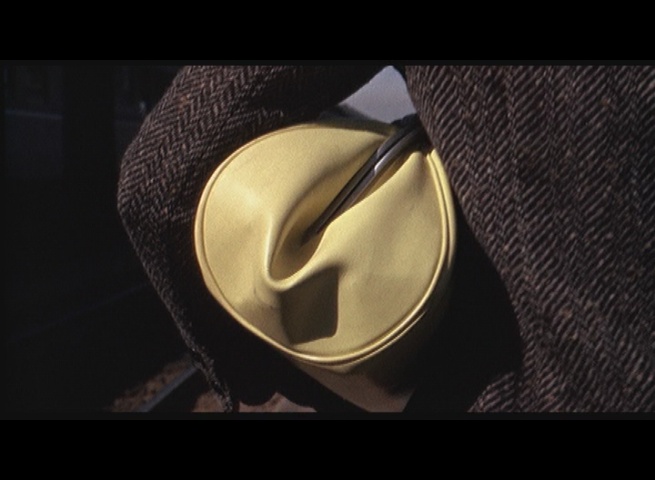
The film opens with a shot of Marnie, in grey and on a grey platform, clutching a yellow purse. In the contents of the purse, Hitchcock implies, Marnie (falsely, we discover) perceives the potential for freedom.
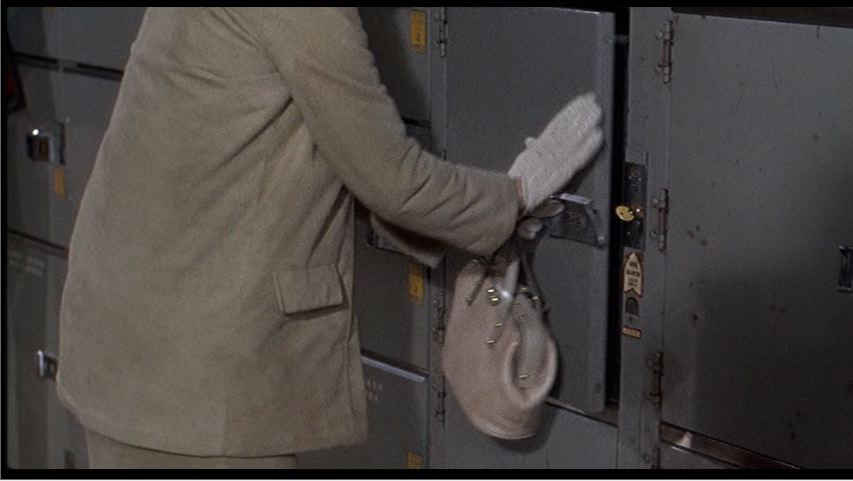
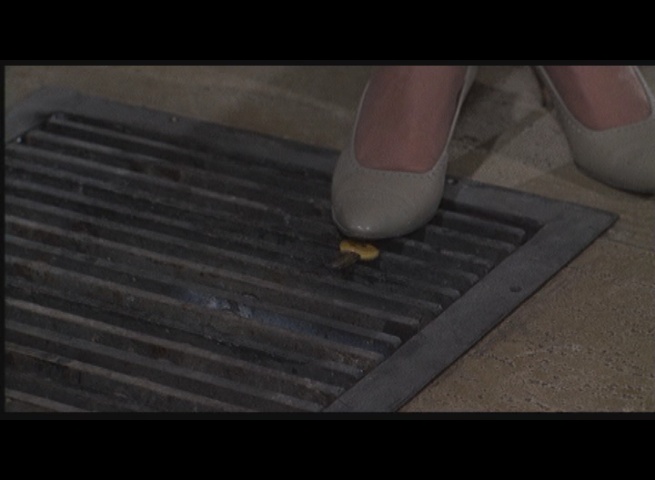
Marnie locks the purse in a grey locker, literally imprisoning it - then kicks away the yellow key to freedom.
Mama's home is shown under the pall of a grey sky which blocks out the (yellow) light of the sun. The yellow taxicab, tied up with the concept of travel and thus freedom, sits neatly on the left half of the frame, while the grey sidewalk and steps leading up to Mama's home occupy the right half. Note how the phallic boat, representing the sailor whom Marnie killed, forms the stark middle line.
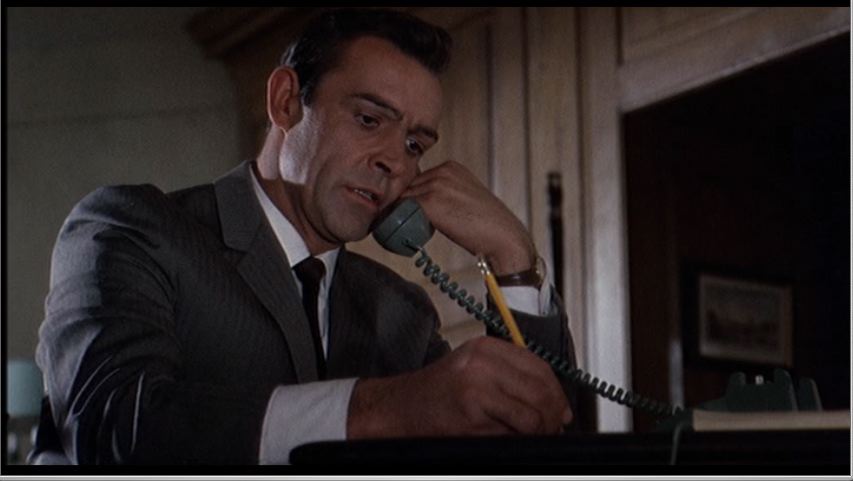
Mark calls a private investigator to root out Marnie's past. He is connected to the prison-related portion of Marnie's life by a blue-grey telephone cord, from which he translates the events into the form of real words by way of his yellow Freedom Pencil. This process lends itself to ready analogy to the Freudian "talking cure" -- which, though beyond the immediate scope of this discussion, plays centrally and obviously into the film.
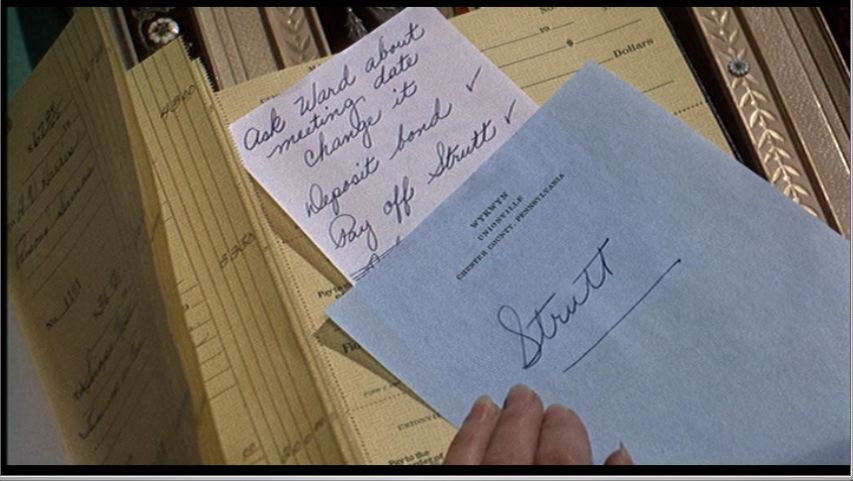
As Lill snoops into Mark's efforts to tame Marnie, she uses blue-grey paper to write down the name of Marnie's previous employer - an artifact of Marnie's previous life whom Lill will use in an effort to send her to literal prison. Mark, by contrast, documents his expenditures towards Marnie on yellow paper in his checkbook.
